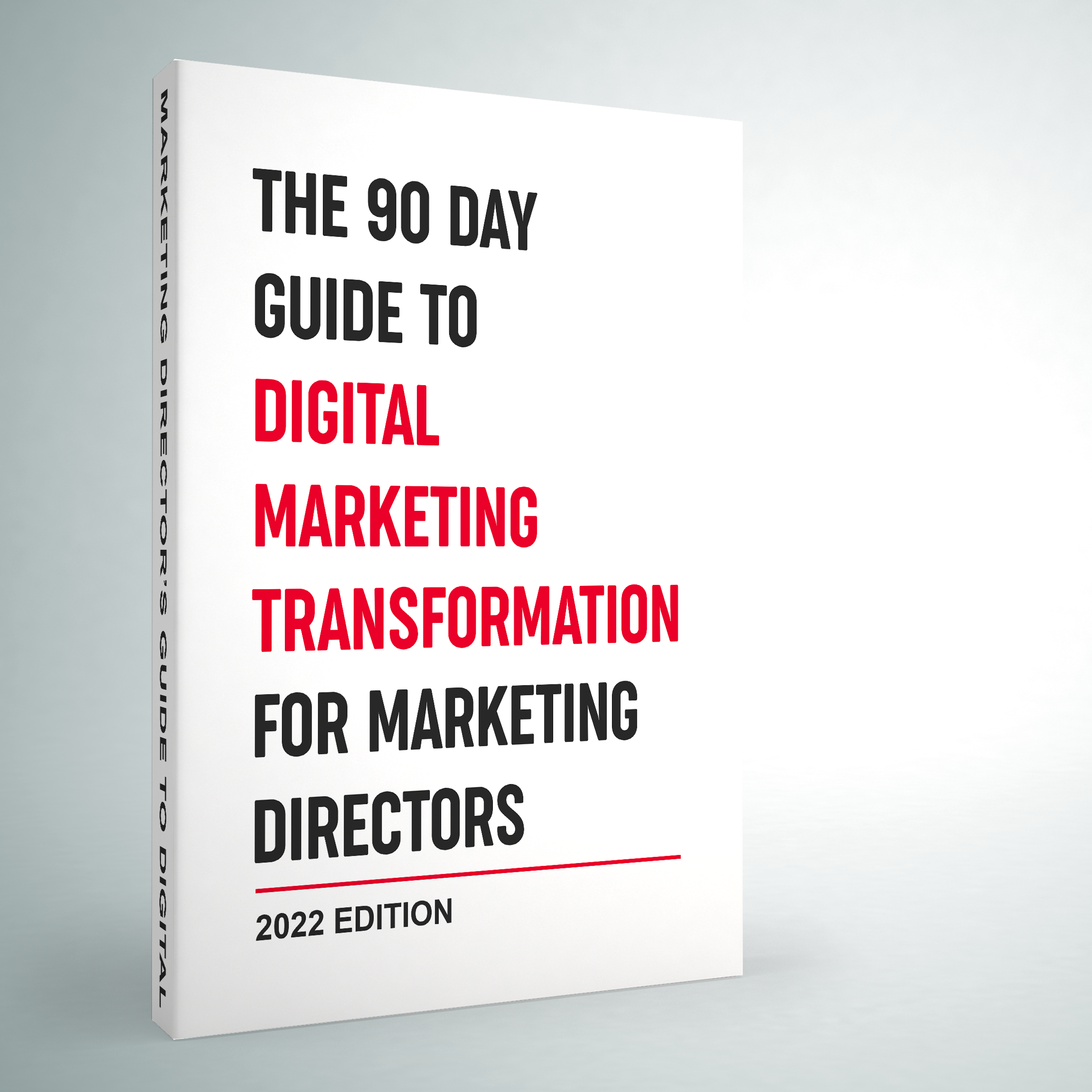Myth: Email is dead

Fact: Email marketing remains the number one tool that businesses use to build trust, educate, and nurture their relationships.
Although it may not feel like the most alluring form of communication, it is certainly proven, effective, and offers a direct channel to get in front of your highest value audiences in all major industries. Over time, this translates into critical success metrics such as acquisition and lifetime value through effective retargeting.
The secret to marketing is doing more of what works and less of what doesn’t.
Email works!
Not only does it work, email is now supported by some of the best back-end data and analytics to measure the impact as part of your overall marketing system.
If your email marketing strategy has fallen down the list of marketing priorities or doesn’t get the attention it deserves, you’ll want to review this article so that it can continue working for you.

Here are some of the benefits of email marketing for your products, services, websites, and other business ventures.
1. You own your data. Relying on social platforms gives you incredible reach but you need to follow the rules. Ultimately you’re playing on someone else’s platform and if it goes away… so does all of your hard work. With an email marketing strategy, once you acquire an email, it’s yours… forever! You get to control what you say, when you say it, and never run the risk of losing access to your data.
2. Reach your target audience. Email marketing has a humongous reach as over 4 billion people worldwide use emails. It is a highly effective marketing channel to directly reach your audience.
3. Achieve higher ROI. Acquisition aside, email marketing has a high return on investment with $36 generated on a single dollar spent. Fees are limited to your Email Service Provider (ESP), like your monthly cost for Mailchimp.
Email marketing boosts brand recognition, improves trust and builds awareness across your business. Email is an opportunity to relay critical sales, support, and educational information quickly and effectively.
4. Tailor your messaging to boost conversions. Email marketing promotes your products and services, generates leads, and boosts conversions. Email can be used as a communication channel for several key business objectives but offers, new products, and upsell/cross sell opportunities have historically been a very strong use case for email strategy.
5. Personalize your emails to build trust. With email marketing, you can create personalized and targeted campaigns that due to their personalized nature drive higher engagement and generate brand trust. Product review emails sent out 30 days after a purchase with personalized product information is a great example of how personalization can be used with your email marketing strategy to collect feedback, drive repeat purchases and improve trust.
6. Measure your successes and tweak accordingly. Email marketing is measurable and scalable. All of the analytics and data tools are available within to help you understand what works and what doesn’t when it comes to your email strategy. Email is not a one size fits all strategy so understanding what content works best with your audience is key to being successful.
Creating an Effective Email Marketing Strategy
Email marketing, if done the right way, will pay off in the short, medium, and long term. Here is how you can create a successful and effective email marketing strategy for your business.
1. Get the Basics Right
Just like any other marketing strategy, start by creating the buyer persona of your target audience and define your campaign goals right off the bat. Then tailor your email campaign taking these aspects into account.
2. Build your Email List
A successful email marketing strategy includes a healthy injection of leads. Without it, even the best email programs will show signs of fatigue and your email list will lose impact over time. Build an email list of your existing and prospective customers who have permitted you to send them emails. You can do this organically through lead magnets, opt-in forms, and social automation, or develop a paid media strategy designed to generate leads.
Create lead magnets that attract your customers and offer something of value to them. Lead magnets are provided to the customer for free in exchange for their email. For example, a free course or webinar, e-books, reports & white papers, and templates, and free tools among several others.
You can also create an attractive and easy-to-fill opt-in form on your site. Keep the form simple and short with an attention-grabbing header that hooks the visitors with the offer.
Tip: Social automation is a new opportunity for marketers to drive leads from your social media efforts. If you haven’t explored this marketing strategy and already have a strong social media strategy, you can check out this case study on how Hook + Ladder helped a national restaurant brand generate thousands of email leads through social automation.
3. Segment & Personalize
Segment and categorize your subscriber database to create tailored marketing campaigns for better results. There are so many ways to organize your subscribers depending on different factors and attributes. You can segment your subscribers by geographic locations, particular age groups, and much more.
You can also categorize them based on the level of engagement. E.g., you can re-send a slightly modified email to the subscribers who have not opened the first mail.
You can also create different offers catered to the stage of the customer journey. You can segment your subscriber base in endless ways, by setting up rules and conditions in an automated email platform.
Use dynamic email content in sync with segmentation that changes the email content including images, offers, and CTAs based on user segmentation. This creates better and targeted offers and further personalizes your email marketing strategy.
4. Optimize for Mobile
User engagement has shifted largely toward mobile devices with nearly 70% of emails being accessed via mobile. Mobile optimization of your marketing emails is essential to engage your audience. Mobile-optimized emails should load quickly, with font types and sizes that are easy to read. The Call-to-Action is clearly defined, with hard to miss tap-able buttons.
So, optimize your emails and websites for mobile to boost customer interaction and engagement.
5. Re-engage your Subscribers
Re-engage your existing or inactive subscribers as your business is already familiar to them. Research the type of content they liked and engaged in before and create a new email copy tailored to that. Mail them an enticing offer or a discount and turn them into active customers from the dormant ones.
6. Maintain List Hygiene
Email lists will deteriorate over time due to several factors; that’s why keeping good hygiene will ensure lower unsubscribes, spam requests, and high engagement. Quality over quantity is the key!
A simple way to improve list hygiene is to send regular opt-out campaigns to your subscribers who have not opened emails over the last 12 months. Ask your subscribers if they would like to be removed and try to engage with them with a final offer. If not, let them know they will be removed from your email list. You’d be surprised how email outreach in this form has a positive effect on brand loyalty while re-engaging inactive subscribers!
The Best Email Marketing Tools
To create a successful email marketing strategy, you need top-tier email marketing tools in your arsenal. Here are some of the best email marketing tools to optimize your marketing campaigns.
- ActiveCampaign – An agile marketing and automation tool to create unique emails and build your customer base. ActiveCampaign also supports sales and customer relationship management (CRM) functionality to tie marketing and sales together (which is very smart!)
- Stripo – If you struggle to work within various email builders, consider using Stripo to build, tweak, and test your emails. You can import your emails most email service providers and within minutes, you’re ready to send them off. #worksmarternotharder
- Litmus – An email tool that will show your designs across all browsers and devices. Don’t forget to check out their industry leading conference “Litmus Live” to be at the forefront of the email marketing industry.
- Omnisend – Good for eCommerce platforms and businesses.
- Campaign Monitor – A great option to create personalized emails.
- Sender – Free tool to create personalized newsletters and build accurate buyer profiles.
- Constant Contact – For those new to email marketing.
- Hyperise – For creating personalized email marketing campaigns.
- MailGenius – Free tool for email deliverability.
Ultimately, the tools that will work for you are based around your business and what you need to get the job done.
If you’re looking for support on which email marketing tools you need, send us a note and we can make some recommendations.
Is Email Going Away?
This marketer says no! Think back to any product you’ve recently subscribed to, or any business you’ve recently joined. Email is an essential part of ensuring that there is always a direct line of communication available.
While some businesses have moved away from email to make way for new shiny communication tools, it is critical that you continue to evolve your email marketing strategy to generate revenue, increase loyalty, and communicate effectively with your customers. If email marketing is new to you or hasn’t been a huge priority, all these steps and considerations can feel daunting.
We’re here to help! Hook + Ladder offers email + automation services to help you navigate and grow your email program while supporting other areas of your business.

Aaron Kerr
Funnel Strategist at Hook + Ladder Digital

